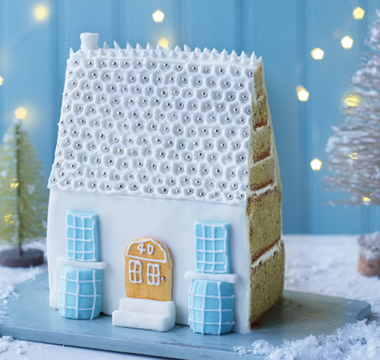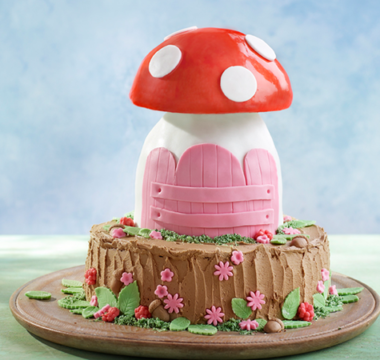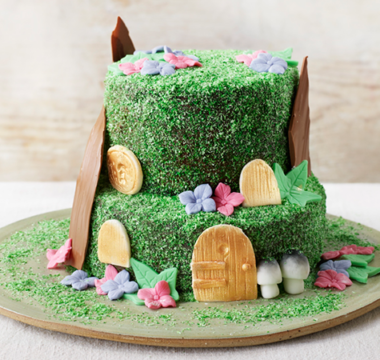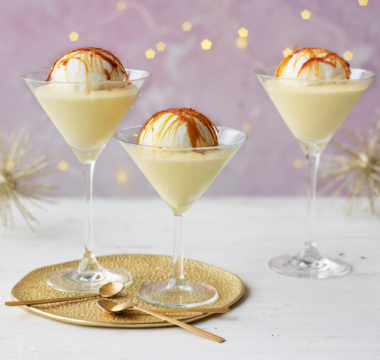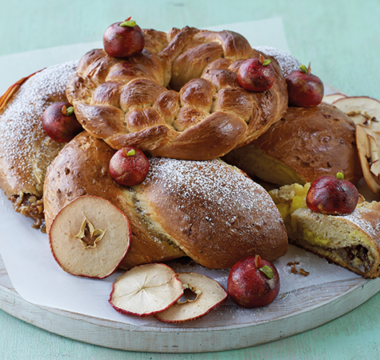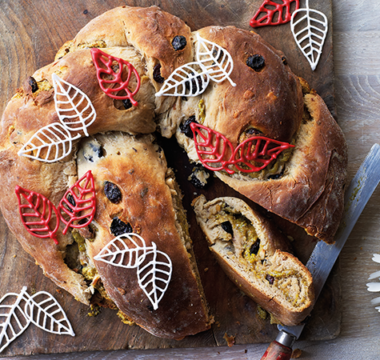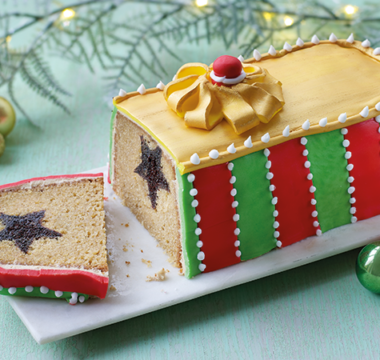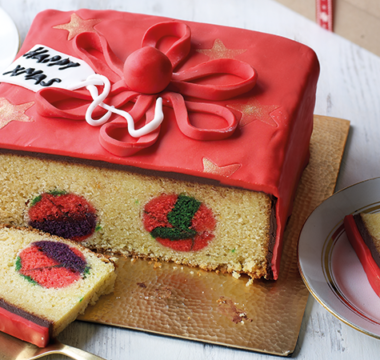This delicious cake is perfect for testing your carving skills. Here it’s a telephone, but you can turn it into pretty much anything you feel creative enough to tackle.
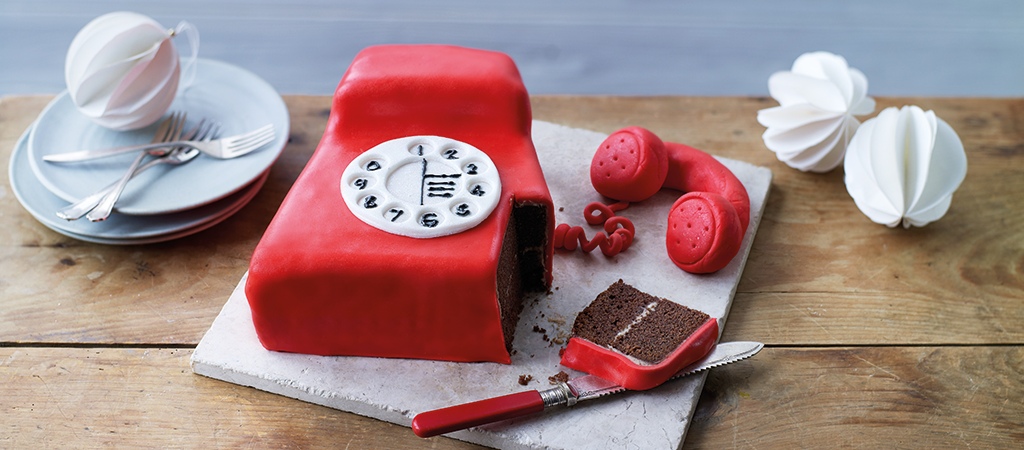

Steven
Christmas & New Year Specials
- Ingredients
- Method
Method
Step 1
Make the sponge. Heat the oven to 180°C/160°C fan/350°F/Gas 4. Dissolve the cocoa powder and coffee together in the boiling water, then whisk in the liqueur and set aside to cool.
Step 2
Cream the sugar, butter and vanilla in the bowl of a stand mixer fitted with the beater until pale and fluffy. Incorporate the eggs one at a time, scraping down the sides of the bowl as you go. Sift the flour, baking powder and salt together, then fold this into the creamed mixture with the cocoa mixture to make a smooth batter.
Step 3
Divide the batter between the two cake tins and bake for 35–40 minutes, until firm and a skewer inserted into the centre comes out clean. Leave the sponges to cool in the tins for 10 minutes, then turn them out onto a wire rack to cool completely.
Step 4
Make the buttercream. Use an electric hand whisk to beat the butter, cream and sugar with the cinnamon, salt, vanilla and hazelnut liqueur until smooth. Cover and set aside.
Step 5
Place one cake on the cake board. Spread one third of the buttercream on top, then place the other cake on top. Using a sharp knife, 3–4cm in from the top edge, cut a long triangular wedge off each side of the square to make a phone shape.
Step 6
Separate the 2 layers of sponge from one of these triangles, then lay them on top of each other in opposite directions so that they fit snugly together in a rectangle at the top of the narrow edge of the phone. Trim to fit, creating a phone cradle. Spread the top and sides of the whole cake with the remaining buttercream and refrigerate.
Step 7
To decorate, reserve 250g of the red sugar paste. Lightly dust a work surface with icing sugar and gently knead the remainder, then roll it out to a square large enough to cover the top and sides of the cake. Lift this over the cake and smooth it neatly over the top and sides. Trim the edge neatly against the cake.
Step 8
Make the handset. Using the reserved sugar paste, shape two 75g balls of red icing into the earpiece and mouthpiece, using the end of a fine paintbrush to create the divots and detail. Shape the handle with another 75g of icing, making a slightly flattened sausage about 18cm long and curving the ends slightly.
Step 9
Construct the handset on the board and lay it next to the phone. Knead the tylo powder into 25g red sugar paste (this helps make it much firmer), then roll it into a string about 60cm long. Wind this loosely around a pencil, leave it to set for a few minutes, then use it to connect the handset to the phone, like a wire.
Step 10
Roll out the white sugar paste to about 3mm thick and use the 9cm cutter to cut out a disc. Dampen the back so that it sticks, and place it in the centre of the cake as the dial. Cut out a second 9cm disc, then cut a 3cm disc out of the centre. Use the 1cm round cutter to cut 10 small holes from the ring of white icing for the numbers on the dial. Fix this on top of the first disc.
Step 11
Using black food colouring, paint the numbers and message in the centre of the dial. (Alternatively, make up a little black icing to piping consistency and pipe these on, using a small piping bag fitted with a fine writing nozzle.)
To make the sugar pastes:
2 tbsp gelatine powder
2 tbsp glycerine
125g liquid glucose
1kg icing sugar
red food-colouring gel
Place 5 tablespoons of cold water in a small pan and sprinkle the gelatin over. Add the glycerine and glucose and heat very, very gently, until the gelatine has dissolved. Place the mixture and half the icing sugar in the bowl of a stand mixer fitted with the beater and mix until smooth. Remove 100g, cover with cling film and set aside.
Add food colouring to the mixer bowl and gradually add about half of the remaining icing sugar to the mixer, until you have a very stiff dough. When the mixture becomes too stiff for the mixer, turn it out and knead it by hand. Add enough icing sugar to make a smooth, elastic dough, then knead in more food colouring as required. Wrap the sugar paste in cling film to prevent it drying out.
Mix the remaining icing sugar into the reserved white sugar paste, again to make a stiff dough. Wrap in cling film until ready to use.

